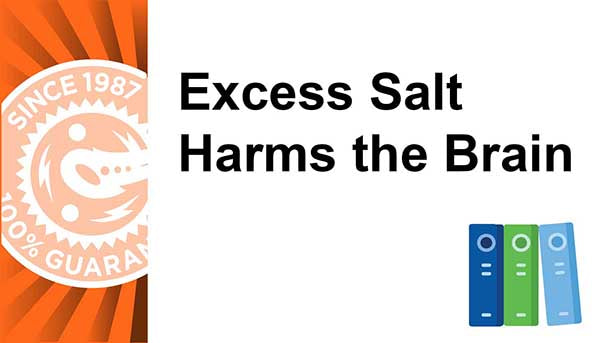By William Misner, Ph.D.
Humans, unlike other animals, cannot make vitamin C. We must consume it from exogenous supplements or our diet. Work establishing mammalian biosynthesis of ascorbic acid indicates that the vitamin C metabolic requirements as is generally accepted may well represent an oversimplification of available evidence.[1, 2, 3] Grollman, Chattejee, Isherwood's research of the late 50's-early 60's, later Stone's papers, and the work of Linus Pauling indicate numerous mechanisms for metabolism of ascorbic acid in mammals cannot be easily addressed or oversimplified. Misinterpretation of the former data historically may have led to incomplete conclusions.
It has been proposed that a biochemical lesion once imposed on humans a requirement for diet-enhanced ascorbic acid. The absence of the enzyme l-gulonolactone oxidase from the liver was implicated [4]. A defect or loss of the gene controlling the synthesis of this enzyme in humans blocks the final phase in the series for converting glucose to ascorbic acid. Not so in other mammals except the guinea pig. Viruses and x-rays have been observed to degenerate DNA-RNA synthesis, or, mutation may simply occur by chance. Such a mutation could have happened, denying the human species the capacity to produce ascorbic acid. Survival in such a cellular environment requires ascorbic acid from an exogenous source. This is not remarkable, nor is science concluded as to the original mechanism. Heterozygotic and or homozygotic allele genetic transit in DNA-RNA mechanics is only in the infancy stages of understanding. Recognized genetic diseases in which a missing enzyme causes a pathological syndrome in humans are phenylketonuria, galactosemia and alkaptonuria.[5]
Biochemist Irwin Stones' original concept regarding the inability of man to manufacture his own ascorbic acid, plausibly due to genetic fault was labeled "hypoascorbemia".[6] The origin of this "defect" is hypothetical. The practical value of Stone s research in scurvy progressed to the point where it could be said that scurvy was not a dietary disturbance, but was a potentially fatal problem due to Medical Genetics. Ascorbic acid did not behave like trace vitamin C, but was a stress-responsive to a liver metabolite produced endogenously in large daily amounts in most mammals, but not in humans. Stones' papers described a human birth defect existing in 100% of the population due to a defective gene in the human gene pool. This potentially fatal genetic liver enzyme disease was dubbed Hypoascorbemia , the cause of scurvy. He had difficulty publishing this work because his ideas were advanced and contrary to the existing theories of the etiology of scurvy. In the 1960 s, Stone s work was brought to the attention of Nobel Laureate, Linus Pauling, who became an ardent investigator in megascorbic therapy, which he described in his books on the common cold and cancer.(See Dr. Allan Cott, M.D.'s tribute to Linus Pauling at the symposium of the Academy of Orthomolecular Psychiatry shortly after Dr. Stone s death.[7]) Even today, taking exogenous high ascorbic acid doses meets resistance from the conservative science community.
DEMAND AND APPLICATION OF VITAMIN C HAS MANY VARIABLES.
Humans are one of the few mammals unable to manufacture ascorbic acid in their liver. Most other animals, except the ape family and guinea pigs, produce ascorbic acid in the liver from glucose in relatively higher amounts than we receive from today's modern diets. In earlier times, humans consumed large amounts of vitamin C in their fresh and wholesome diet. For this very reason, Pauling has suggested the human body needs somewhere between 2,000 and 18,000 mg. of vitamin C daily. These amounts seem a little high, given the basic food values of vitamin C extracted from food seldom exceeds 140 mg per food item, or a total of only 250 mg vitamin C per meal. More conservative alternative medicine scientists suggest less, 600 to 1,200 mg. daily, based on extrapolations from the historical herbivore, early-human diet. These levels can be obtained today by eating sufficient fresh food; a diet that includes foods with high levels of vitamin C can provide several grams or more per day.
Vitamin C or ascorbic acid, is the enolic form of 3-oxo-L- gulofuranolactone. It can be prepared by synthesis from glucose, or extracted from plant sources such as rose hips, black currants or citrus fruits. It is easily oxidized in air. Ascorbic acid is oxidized to dehydroascorbic acid, which can undergo irreversible hydrolysis to 2,3-diketo-L-gulonic acid, with decarboxylation to CO2 and components of the pentose phosphate cycle or oxalic acid plus threonic acid. It is essential for the formation of collagen and intercellular material, bone and teeth and for the healing of wounds. It helps maintain elasticity of the skin, aids the absorption of iron and improves resistance to infection. It is used in the treatment of scurvy and may prevent the occurrence and development of cancer.
DISEASE-PREVENTION REQUIRED DOSE, ABSORPTION, AND CONCENTRATION.
The RDA for adults is considered to be 60 mg. We need only about 10-20 mg to prevent scurvy, and there is more than that in one portion of most fruits or vegetables. Infants need 35 mg, about 50 mg is needed between ages one and fourteen, and 60 mg. afterward are the suggested minimums. During pregnancy, 80 mg are required and 100 mg. are needed during lactation. Realistically, between 100-150 mg daily is a minimum dosage for most people. Some ascorbic acid is stored in the body where it seems to concentrate in the organs of higher metabolic activity. These include the adrenal glands (about 30 mg), pituitary, brain, eyes, ovaries and testes. A total of about 30 mg. per pound of body weight. By inference, tissues that maintain a higher concentration of vitamin C would be most susceptible to chronic disorders as a result of chronic deficiency. Plasma ascorbic acid concentration of a healthy person is 8-14 mg/L, while adrenal glands, pituitary, thymus, corpus luteum and retina have concentrations more than 100 times higher. The brain, spleen, lungs, testicles, lymph glands, liver, thyroid, small intestinal mucosa, leukocytes, pancreas, kidney and salivary glands have concentrations 10-50 times that of plasma. The skeletal, smooth and cardiac muscle, and erythrocytes have concentrations about ten times that of plasma. Vitamin C supplementation would probably have a very positive affect on these organs particularly. According to Dr. Colgan, Ph.D., who researched vitamin C absorption rates in athletes, reported a variance with individuals ranging from 100-1000%.[8] He indicated that when the bowels begin to produce soft stools, it is time to lower the dose intake toward bowel tolerance.
FACTOR THE RATE OF ABSORPTION FOR SUPPLY AND DEMAND.
Vitamin C is absorbed from the gastrointestinal tract in the form of ascorbic acid, while dehydroascorbic acid is reduced to ascorbic acid for gastrointestinal absorption. Ascorbic acid is excreted by the kidneys, yet some is metabolized in the body. Ascorbic acid is readily absorbed from the intestines. The typical ideal rate is 80 to 90 percent from a low divided dose. It is metabolized by the body in roughly a two hour period, then undergoes transition from the blood stream to either kidney excretion or glandular mediation to tissue sites where it is required within 3-4 hours time. For this reason, it is suggested that vitamin C supplements be taken in four-hour intervals rather than once a day. Time-released ascorbic acid with its fat-soluble palmitate derivative provide an alternative to the divided dose protocol. Vitamin C is used up even more rapidly during emotional stress, alcohol, or smoking. Vitamin C blood levels of smokers are much lower than those of nonsmokers given the same intakes. Other situations reduce absorption or increase depletion of vitamin C include fever, viral illness, antibiotics, cortisone, aspirin, pain medicines, environmental toxins such as DDT, petroleum products, carbon monoxide, exposure to heavy metals such as lead, mercury or cadmium. Sulfa antibiotics increase elimination of vitamin C from the body by two to three times the normal rate. Many factors increase the demand for ascorbic acid, and unless these are appreciated, calculated and dosed, they may result in depleted levels.
Briefly Summarized: The demands depleting ascorbic acid are:
- The age of the individual
- Habits -- such as smoking, the use of alcohol, playing habits
- Sleep, especially when induced artificially;
- Trauma -- trauma caused by a pathogen, the trauma of work, the trauma of surgery, the trauma to the body produced accidentally or intentionally
- Kidney threshold
- Environment
- Physiological stress
- Time of year
- Loss in the stool
- Variations in individual absorption;
- Variations in "binders" in commercial tablets
- Body chemistry
- Drugs
- Pesticides
- Body weight
- Inadequate storage
In spite of all these factors noted here, agreement between conservative allopathic M.D.'s and alternative, less-conservative M.D.s is remarkably near.
ALLOPATHIC VS. ALTERNATIVE MEDICAL VIEW
Dr. Mark Levine, from conservative medical practice, Chief of Molecular and Clinical Nutrition at the National Institutes of Health(NIH), and recent author of a research project proposing increased RDA dose amounts in the Journal of the American Medical Association publication, suggested, "At 100 milligrams all the tissues are saturated, at 200 milligrams, the blood plasma is saturated, but at 500 milligrams dose, then absorption levels appear complete, and rate of absorption begins to decrease."
"Efficient absorption of vitamin C is optimal in ranges of up to 500 mg. per single dose." Dr. Andrew Weil, an alternative medicine M.D., reviewed his recommendations of vitamin C dose in August of 1999. "Many of you have heard that I've reduced my recommended dosage of vitamin C from 2,000 to 6,000 mg divided into three doses a day to only 200 to 500 mg divided into two doses. I made the change after I examined two recent studies that show lower levels of ascorbic acid more than saturate the body's tissues, and thus are enough to protect against cancer, heart disease and other chronic illnesses. A review of clinical trials published in the April 21st issue of the Journal of the American Medical Association concluded that 200 mg. a day is the maximum human cells can absorb, making anything above that level a waste. I wouldn't worry if you've been taking the higher dosages I've recommended in the past as vitamin C is water soluble and anything not used by the body quickly passes out. In fact, I still recommend higher dosages to those not getting at least five servings of fruits and vegetables as part of their daily diet."[9]
A RATIONAL CONCLUSION
The rationale suggestion is for those who are moderately active (one to two hours per day), live in a congested city environment, work indoors enclosed within the closed confines of other workers, are exposed to environmental toxins or commercial generated toxic substances, come from a family predisposed to degenerative auto-immune disorders, smoke, drink alcohol, and/or eat less than five servings per day of fresh vegetables and fruits require two to four divided doses ranging from 200-500 milligrams per dose, as tolerated by a healthy solid-stool excretion. [10, 11, 12, 13, 14, 15] Once a loose or soft bowel movement is experienced, a specific signal of body overdose advises lowering exogenous dose intake volume rate. [16] Taking divided higher dose Vitamin C up to the bowel tolerance level is a consideration for those who accept the conclusive research of Stone and Pauling. Colgan's former adage [8] pronounces and demonstrates variance in dose tolerance ranges from 100-1000%. This conclusively indicates that an athlete's individual biochemistry as related to their respective dietary income opposed to their expenditure rate are shown to determine required macro- and micro- nutrient doses. [17, 18, 19, 20, 21]
REFERENCES
- Grollman, A. P. & Lehninger, A. L.: Arch. Biochem., 69:458, 1957.
- Chattejee, I. B., Kar, N. C., Guha, B. C.: N.Y. Acad. Science 92:36, 1961.
- Isherwood, F. A. & Mapson, L. W.: N.Y. Acad. Science 92:6, 1961.
- Burns, J. J. Am. J. Med. 26: 740, 1959.
- Burden of genetic disorders in India, Verma IC, Indian J Pediatr 2000 Dec;67(12):893-8.
- Stone, I.: Brief Proposal Per. Biology & Medicine, Autumn 1966.
- Orthomolecular Psychiatry, 1984, Volume 13:150.
- Colgan M, OPTIMUM SPORTS NUTRITION, Advanced Research Press, New York, 1993:11-12.
- Dr. Andrew Weil's Statements http://www.drweil.com/qa_answer/0,3189,1579,00.html
- Preiser JC, Van Gossum A, Berre J, Vincent JL, Carpentier Y. Enteral feeding with a solution enriched with antioxidant vitamins A, C, and E enhances the resistance to oxidative stress. Crit Care Med. 2000 Dec;28(12):3828-32.
- Demertzis S, Scherer M, Langer F, Dwenger A, Hausen B, Schafers HJ. Ascorbic acid for amelioration of reperfusion injury in a lung autotransplantation model in sheep. Ann Thorac Surg. 2000 Nov;70(5):1684-9.
- Erickson KL, Medina EA, Hubbard NE. Micronutrients and innate immunity. J Infect Dis. 2000 Sep;182 Suppl 1:S5-10.
- Nieman DC, Is infection risk linked to exercise workload? Med Sci Sports Exerc. 2000 Jul;32(7 Suppl):S406-11.
- Vojdani A, Bazargan M, Vojdani E, Wright J. New evidence for antioxidant properties of vitamin C. Cancer Detect Prev. 2000;24(6):508-23.
- Racek J, Holecek V, Trefil L. [Antioxidative properties of ascorbic acid]. Cas Lek Cesk. 2000 Sep 27;139(19):583-7.
- Garg K, Khanna SK, Das M, Singh GB, Effect of extraneous supplementation of ascorbic acid on the bio-disposition of benzanthrone in guinea pigs. Food Chem Toxicol. 1992 Nov;30(11):967-71.
- Zeisel SH, Is there a metabolic basis for dietary supplementation? Am J Clin Nutr. 2000 Aug;72(2 Suppl):507S-11S.
- Potts MC, An evaluation of the nutrient intake of a group of elderly people attending a luncheon club. Hum Nutr Appl Nutr. 1987 Oct;41(5):352-6.
- Bhargava A, Bouis H, Maximum likelihood estimation of between and within variations in energy and protein intakes from infancy to adolescence for the Philippines. Stat Med. 1992 Feb 28;11(4):533-45.
- DeWalt KM, Diet as adaptation: the search for nutritional strategies. Fed Proc. 1981 Sep;40(11):2606-10.
- Guenther PM, Kott PS, Carriquiry AL, Development of an approach for estimating usual nutrient intake distributions at the population level. J Nutr. 1997 Jun;127(6):1106-12.
The above article is reprinted by permission of the Endurance Marketing Group,
HAMMER NUTRITION LTD.









